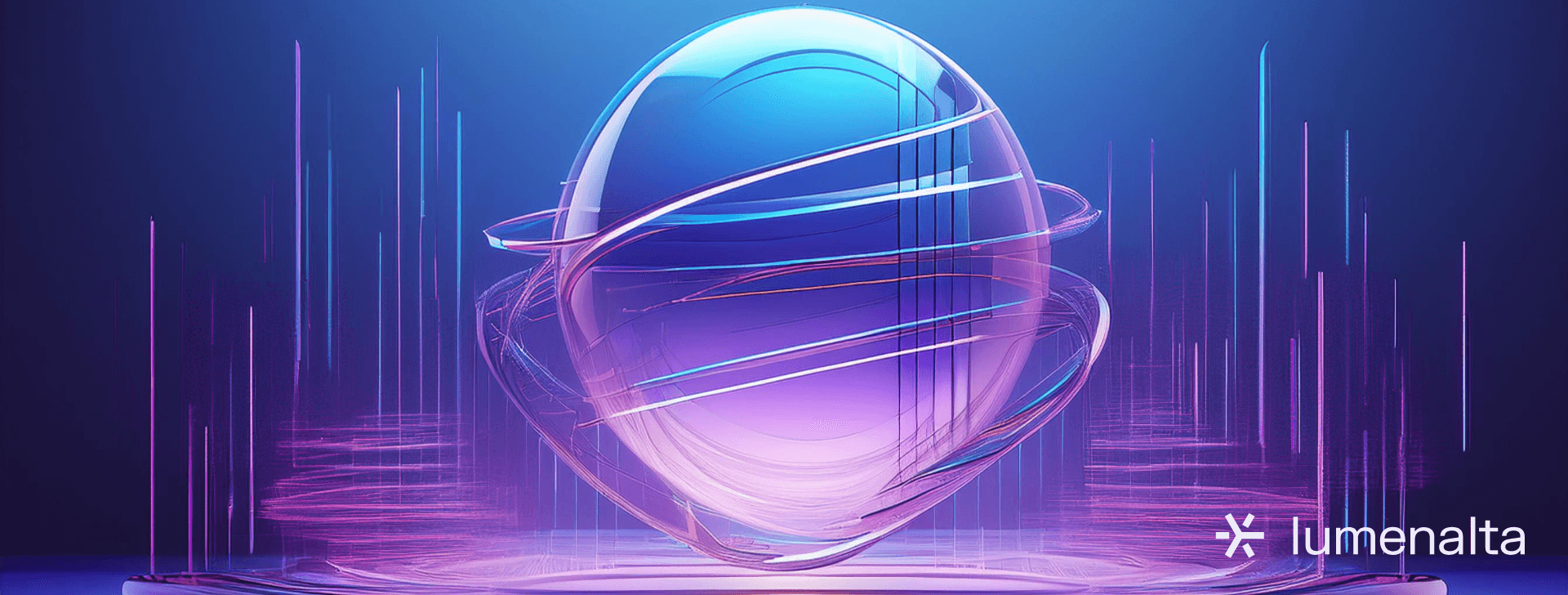
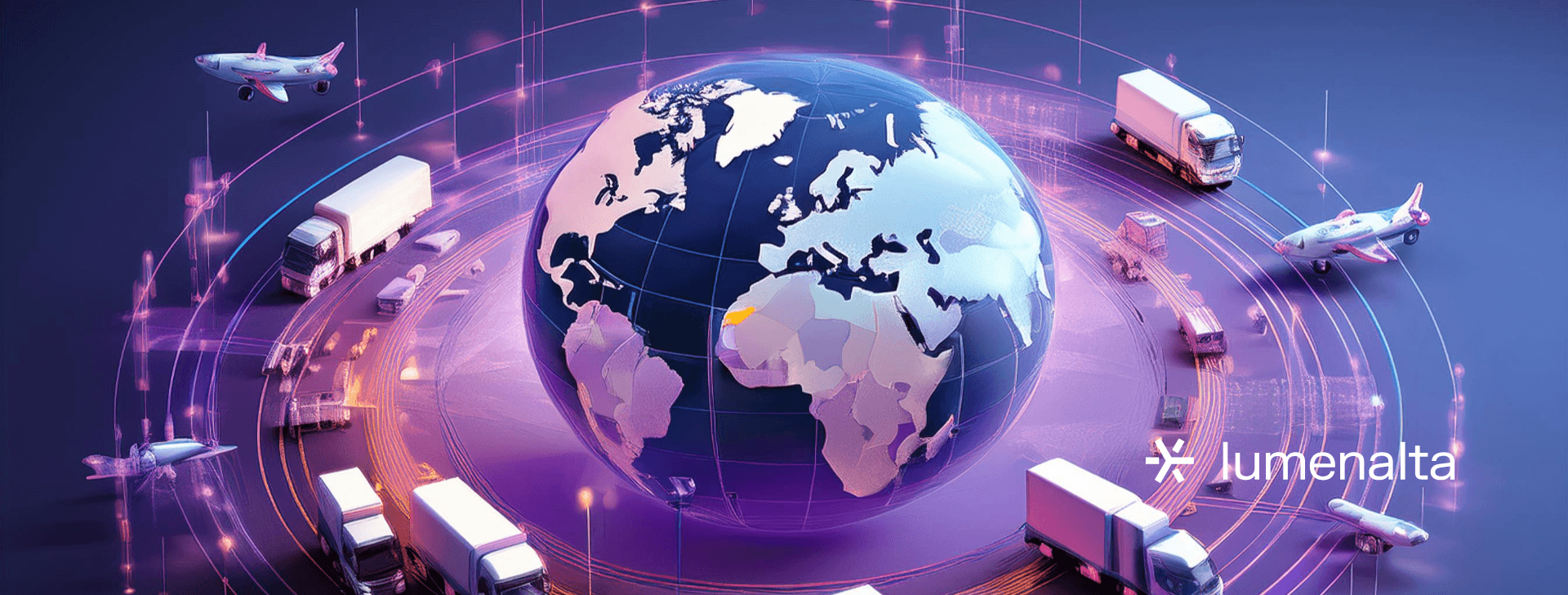
AI in transportation: 10 ways it’s transforming the industry
JAN. 27, 2025
5 Min Read
Artificial intelligence (AI) is reshaping transportation by solving long-standing challenges and unlocking new business potential.
Its integration into systems such as logistics, fleet management, and passenger services is making operations faster, more cost-effective, and more scalable. With solutions like predictive analytics and real-time tracking, businesses are seeing measurable improvements in efficiency, safety, and environmental sustainability. As AI advances, transportation companies can align with future requirements, delivering results that balance innovation with long-term growth.
Key takeaways
- 1. AI in transportation solves inefficiencies, reduces costs, and improves safety through technologies like predictive analytics and machine learning.
- 2. Predictive maintenance, traffic management, and route optimization are some of the most impactful AI applications in the industry.
- 3. Businesses gain an advantage by leveraging AI for scalability, faster delivery, and better customer experiences.
- 4. While AI adoption involves challenges like high costs and data security, it offers measurable benefits for long-term growth.
- 5. AI drives the shift toward autonomous vehicles and sustainable practices, setting the stage for future transportation advancements.
Understanding AI in transportation
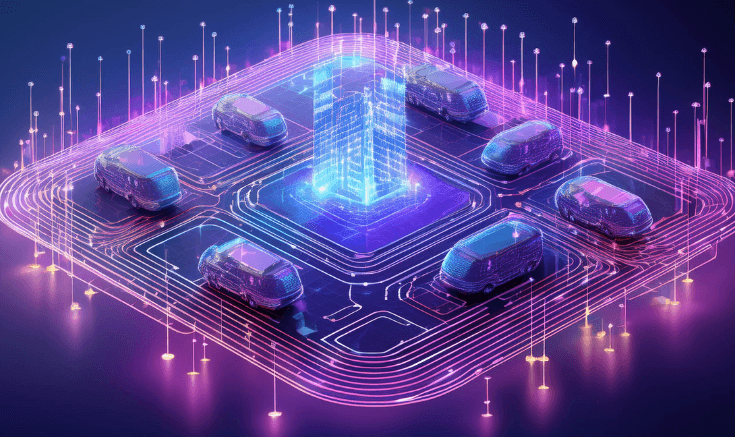
Artificial intelligence redefines transportation by addressing inefficiencies, reducing operational costs, and enhancing safety. Its applications include optimizing routes, permitting autonomous vehicles, and analyzing massive data sets to improve system performance. Using tools like machine learning, predictive analytics, and computer vision, AI introduces precision and scalability to previously complex challenges.
AI supports transportation providers by forecasting necessities, minimizing delays, and detecting issues before they occur. These capabilities deliver measurable business benefits such as cost savings, faster time to market, and improved asset utilization. As businesses adopt AI solutions in transportation and logistics, they unlock untapped opportunities to increase efficiency, streamline operations, and prepare for future growth.
"Artificial intelligence is redefining transportation by addressing inefficiencies, reducing operational costs, and enhancing safety."
Advantages and disadvantages of AI in transportation
AI technologies are reshaping transportation by introducing efficiency, precision, and scalability to key operations. From optimizing routes to reducing costs, AI provides measurable business benefits while improving safety and sustainability. However, it also comes with challenges, such as implementation costs and data privacy concerns, which organizations must address for successful adoption. A closer look at the advantages and disadvantages helps stakeholders better understand the potential of AI in transportation.
Advantages:
- Operational efficiency: AI enhances transportation systems by automating complex processes like route planning, fleet coordination, and predictive scheduling, leading to faster and more reliable operations.
- Cost savings: Predictive maintenance tools reduce unexpected repair costs, while AI-powered fuel optimization lowers consumption, cutting operational expenses for logistics and transportation companies.
- Safety improvements: Systems leveraging AI analyze vehicle and road data to detect potential hazards and prevent accidents, enhancing compliance and overall safety standards.
- Data-backed insights: AI processes large-scale transportation data in real time, offering actionable insights on congestion patterns, shipment status, and performance metrics.
- Passenger customization: Personalization tools powered by AI adjust ticket prices, seating options, and service recommendations based on individual preferences, boosting customer satisfaction.
- Environmental impact reduction: AI minimizes emissions through better fuel management, efficient routing, and traffic decongestion, supporting sustainability objectives.
Disadvantages:
- Initial investment requirements: AI systems need significant upfront costs, including hardware, software, infrastructure upgrades, and specialized staff training.
- Privacy and security challenges: Collecting and analyzing large amounts of data raises concerns about protecting sensitive information and meeting regulatory standards.
- Infrastructure limitations: AI solutions depend on advanced networks like IoT and 5G, which may not be accessible or reliable in every region.
- Workforce impact: Automating repetitive tasks may lead to job displacement, requiring businesses to develop strategies for workforce reskilling and adaptation.
- Integration complexity: Aligning AI with existing operations often involves substantial time and expertise, making implementation challenging.
- Bias and fairness concerns: Poorly designed AI models may result in biased outcomes, potentially creating trust issues or operational inefficiencies.
AI in transportation holds immense potential for improving operational efficiency, reducing costs, and supporting scalable solutions. Organizations must balance their advantages with careful planning to address implementation barriers and maximize their impact. Businesses that invest in thoughtful strategies can unlock measurable outcomes and long-term growth opportunities.
10 AI in transportation examples
AI applications in transportation are delivering transformative results across various use cases. From predictive maintenance to passenger experience personalization, these examples highlight how AI is making operations more efficient, scalable, and aligned with modern business goals. Each example demonstrates AI's practical value to transportation and logistics, showcasing solutions that optimize processes and drive sustainable growth.
1. Predictive maintenance
Predictive maintenance leverages AI and IoT sensors to monitor the condition of vehicles and equipment continuously. Sensors collect data on parameters such as engine temperature, vibration, and fuel efficiency, which AI algorithms analyze to detect patterns indicating potential failures. For example, an AI system might predict that a bus engine requires servicing based on abnormal vibrations, allowing proactive repairs before a breakdown occurs.
This approach significantly reduces unexpected downtime, cutting costs associated with emergency repairs and disruptions. Predictive maintenance also enhances safety by addressing issues early and extends the lifespan of assets, helping businesses avoid premature replacements. For example, a logistics company using predictive maintenance can prevent delays caused by vehicle failures, improving both customer satisfaction and operational efficiency.
2. Traffic management systems

AI-powered traffic management systems process real-time data from sources like cameras, road sensors, and GPS devices to optimize traffic flow. These systems adjust traffic signal timings dynamically based on current congestion levels and predict peak traffic periods using historical data and weather forecasts.
For example, in a smart city, AI might detect a traffic jam at a major intersection and reroute vehicles to alternative roads, alleviating congestion. This benefits drivers with smoother travel experiences and improves logistics for businesses by reducing delays in delivery operations. Municipalities achieve lower emissions and enhanced road safety, showcasing how AI can support sustainable urban growth.
3. Autonomous vehicles
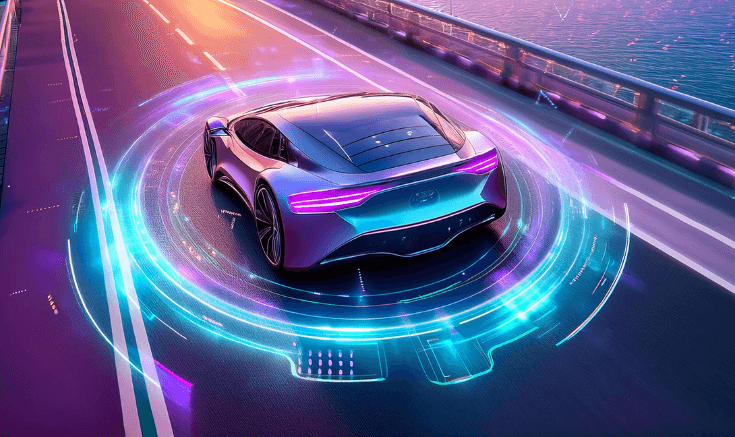
Autonomous vehicles rely on AI technologies, including computer vision, machine learning, and sensor fusion, to handle and make decisions in real-time. These vehicles are designed to reduce human error, which is responsible for the majority of road accidents.
In freight transportation, self-driving trucks can automate long-haul deliveries, reducing driver fatigue and operational costs. Companies like Waymo and Tesla are developing autonomous solutions that improve delivery timelines and optimize fuel consumption. As the technology matures, autonomous vehicles are expected to revolutionize both passenger and goods transportation, creating safer and more efficient systems.
4. Route optimization for logistics
Route optimization powered by AI is modernizing logistics by analyzing multiple data sources simultaneously, including live traffic conditions, weather patterns, fuel costs, delivery priorities, and even road closures. Traditional routing systems rely on fixed parameters, but AI systems dynamically adjust routes in real time to find the most efficient path for each delivery.
For instance, a logistics company delivering perishable goods can leverage AI to ensure faster transit times for time-sensitive shipments, bypassing traffic congestion or adverse weather conditions. AI can also prioritize deliveries based on proximity, urgency, or customer preferences, ensuring high-priority shipments are handled first. This level of precision reduces fuel consumption and delivery times, leading to significant cost savings.
AI-led systems also permit scalability. For businesses with growing delivery volumes, these systems automate the planning process for hundreds or thousands of deliveries, streamlining operations and reducing dependency on manual logistics teams. Over time, data from optimized routes helps businesses predict future requirement patterns and make long-term resource allocation decisions.
5. Driver behavior analytics
AI-powered driver behavior analytics uses sensors and telematics to monitor how drivers operate their vehicles continuously. Speed, acceleration, braking frequency, and idle times are analyzed to identify patterns and highlight risky or inefficient driving behaviors. For example, an AI system might detect that a driver frequently engages in sudden acceleration and hard braking, increasing fuel consumption and accelerating wear and tear on the vehicle. Fleet managers can use this information to provide targeted training or coaching to improve driving habits.
This technology can also create scorecards for drivers, incentivizing safer driving through performance-based rewards. Businesses benefit by reducing accident risks, cutting insurance premiums, and improving fuel efficiency. Additionally, real-time alerts from AI systems can notify drivers of unsafe behaviors, allowing immediate corrections and promoting a safety culture.
6. Real-time vehicle tracking
AI-powered real-time vehicle tracking gives businesses a comprehensive overview of their fleet’s location and status at any moment. Unlike traditional GPS systems, AI enhances tracking by integrating data from telematics, weather forecasts, and delivery schedules to deliver actionable insights. For example, an AI-powered tracking system can instantly alert dispatchers and suggest alternative routes or backup vehicles if a vehicle is delayed due to traffic or mechanical issues. This capability minimizes delays, informs customers of accurate delivery ETAs, and improves operational transparency.
AI tracking also allows predictive insights. For instance, if historical data shows that a certain delivery route is frequently delayed on Fridays due to increased traffic, the system can proactively adjust schedules or recommend alternative paths in advance. Businesses that utilize this technology experience smoother operations, higher customer satisfaction, and better resource utilization, particularly in high-demand sectors like retail and food delivery.
7. Passenger experience personalization

AI takes customer experience to the next level by enabling transportation providers to offer personalized services based on individual preferences and behaviors. For example, ride-hailing apps like Uber or Lyft use AI to recommend faster routes, preferred vehicle types, or even loyalty rewards based on a user’s travel history.
Public transit systems are also adopting personalization through AI. For example, some rail or bus systems use AI to provide customized notifications about delays or schedule changes based on a passenger’s typical commuting route. Airlines can use AI to offer tailored recommendations, such as meal preferences or upgrade options, during the booking process.
These personalized experiences increase customer satisfaction and create new revenue opportunities through targeted marketing and upselling. Understanding passenger preferences allows businesses to strengthen loyalty and differentiate themselves in aggressive markets.
8. Fleet management improvements
AI-powered fleet management systems streamline operations by automating complex tasks such as vehicle assignment, fuel monitoring, and maintenance scheduling. These systems analyze telematics, GPS, and predictive analytics data to optimize fleet utilization and ensure vehicles operate at peak efficiency.
AI can assign the right vehicles to the right routes based on load requirements and fuel efficiency, ensuring that no resources are under- or over-utilized. Maintenance scheduling is another area where AI shines. Instead of relying on fixed schedules, AI systems predict maintenance needs based on factors like mileage, engine performance, and historical breakdown patterns. Automating these processes gives businesses the capacity to reduce operational inefficiencies, minimize vehicle downtime, and save on fuel and repair costs. AI-led fleet management also supports long-term planning, allowing companies to make data-backed decisions about when to expand or replace their fleets.
9. Smart parking solutions
AI is transforming urban parking using real-time data and advanced analytics to make parking more efficient and driver-friendly. Sensors embedded in parking lots or street parking spaces detect occupancy. At the same time, AI systems analyze this data to guide drivers to the nearest available spot through mobile apps or digital signage.
In busy city centers where parking is constantly challenging, an AI-powered system might predict which areas will likely have vacancies based on historical patterns and direct drivers accordingly. This saves drivers time and reduces fuel consumption and emissions caused by vehicles idling while searching for parking. Cities benefit from increased revenue through dynamic pricing for high-demand parking zones, while businesses in these areas see improved foot traffic due to better parking availability. Additionally, AI-based parking systems can be integrated with smart city initiatives to optimize overall traffic flow.
10. Environmental impact reduction
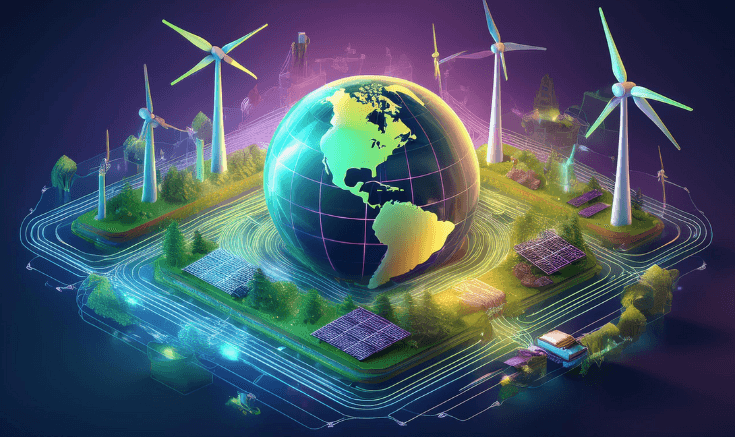
AI contributes significantly to sustainability in transportation by enabling solutions that reduce fuel consumption, emissions, and energy usage. For example, route optimization minimizes unnecessary mileage, reducing carbon footprints for logistics and delivery companies.
AI also plays a key role in supporting the transition to electric vehicles (EVs). Analyzing charging station availability, energy demand, and vehicle battery levels allows AI to ensure efficient charging schedules and helps EV fleet operators reduce downtime.
AI can optimize schedules and routes to reduce energy waste in public transportation, ensuring buses or trains operate only when and where needed. Some companies also leverage AI to consolidate shipments or deliveries, maximizing vehicle utilization and eliminating “empty miles.”
These efforts align businesses with regulatory sustainability goals and improve brand reputation. For example, a logistics provider reducing emissions through AI-led efficiencies can attract eco-conscious customers and partners, creating environmental and business value.
AI in transportation demonstrates practical solutions that help businesses achieve measurable efficiency, cost reduction, and scalability improvements. These use cases highlight how AI technologies align with modern challenges and unlock new growth opportunities.
"Autonomous vehicles rely on AI technologies, including computer vision, machine learning, and sensor fusion, to handle and make decisions in real-time."
Driving change: AI in transportation
The future of AI in transportation is defined by advancements prioritizing efficiency, safety, and sustainability. As technologies like machine learning and computer vision develop, their integration into transportation systems will expand, creating opportunities for businesses to scale operations, cut costs, and improve service delivery. AI’s role in shaping next-generation infrastructure and operational models will grant companies to adapt to shifting needs and regulatory requirements.
Autonomous transportation is expected to become more mainstream, with self-driving vehicles and automated delivery systems offering faster, safer, and more reliable services. AI-powered predictive analytics will become more sophisticated, helping organizations address maintenance needs, optimize energy consumption, and improve logistics planning. Additionally, AI's ability to analyze data will support urban planning and reduce the environmental impact of transportation.
Businesses that invest in AI-based solutions now are better positioned to meet the future needs of the transportation industry. These solutions deliver measurable business results today and prepare organizations for future growth, regulatory alignment, and operational scalability. As AI redefines possibilities, its impact on transportation will extend beyond technology, reshaping how goods and people move efficiently and sustainably.
AI is not just a technological advancement—it’s a transformative force that drives operational efficiency, safety, and sustainability in transportation. Lumenalta helps organizations utilize the full potential of AI while achieving measurable outcomes. Let’s build a brighter path forward, together.
table-of-contents
- Understanding AI in transportation
- Advantages and disadvantages of AI in transportation
- 10 AI in transportation examples
- 1. Predictive maintenance
- 2. Traffic management systems
- 3. Autonomous vehicles
- 4. Route optimization for logistics
- 5. Driver behavior analytics
- 6. Real-time vehicle tracking
- 7. Passenger experience personalization
- 8. Fleet management improvements
- 9. Smart parking solutions
- 10. Environmental impact reduction
- Driving change: AI in transportation
- Common questions about AI in transportation
Common questions about AI in transportation
How is AI used in transportation?
What are some examples of AI in transportation?
What are the benefits of AI in transportation and logistics?
What are the challenges of using AI in transportation?
What does AI in transportation look like in 2025 and beyond?
Want to learn how artificial intelligence can bring more transparency and trust to your operations?


